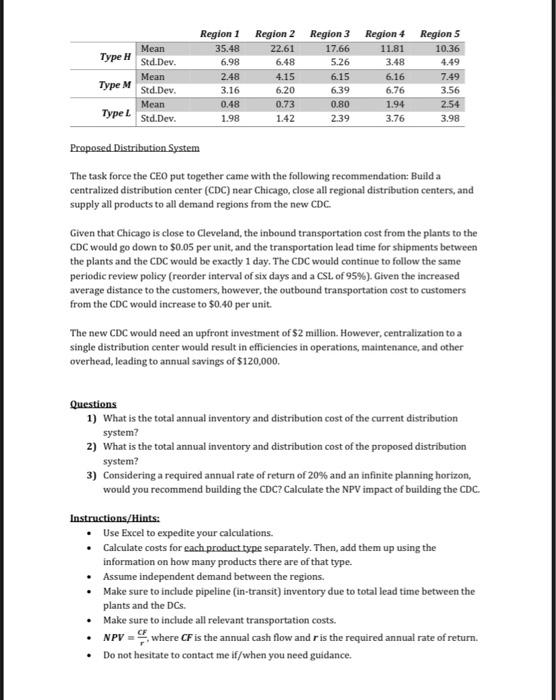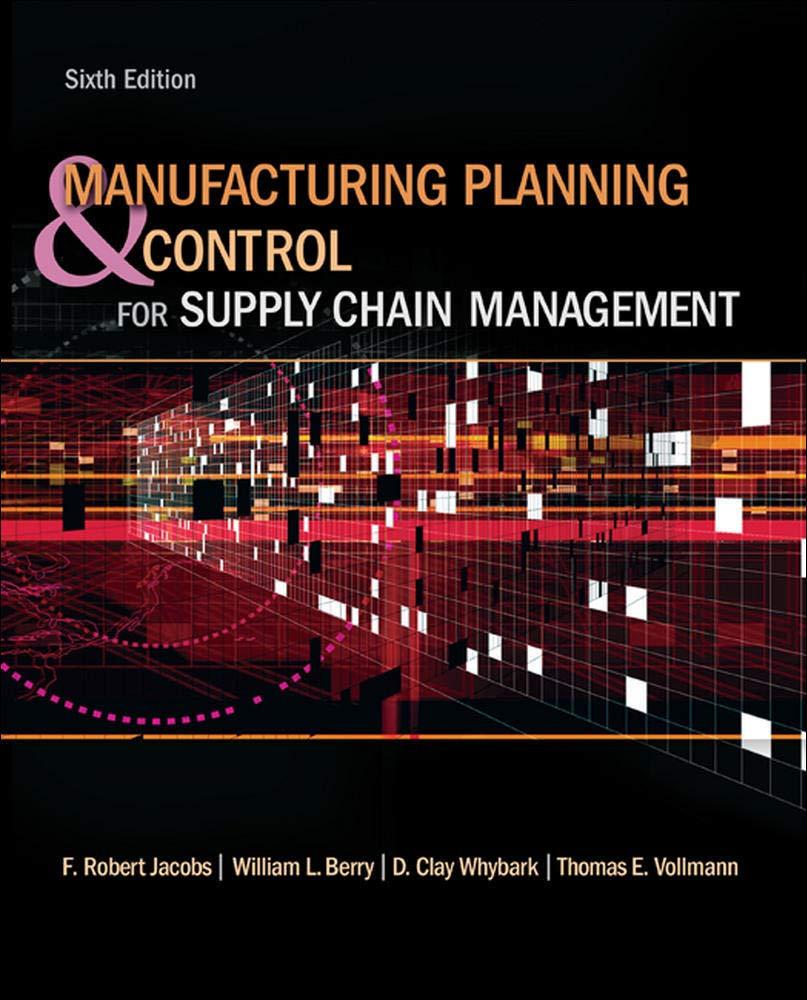EL.KO, a manufacturer of lighting fixtures, has been outstanding in developing new products, but the new CEO has observed some potential opportunities in optimizing its distribution system. Current Distribution System The company has 100 SKUs in its product line, all manufactured in its own plants located in the Cleveland area. For demand management purposes, the contiguous United States was divided into 5 regions as shown below. Each region was served by a separate distribution center (DC) owned by ELKO. Customers (all business: retailers, contractors, offices, etc.) placed orders with their DC, which tried to supply them from inventory. Each DC ordered replenishments from the company's plants, using a periodic review policy with a reorder interval of six days and a CSL of 95% (use z=1.645 ). The plants, in turn, scheduled make-to-order production based on DC orders (L.e, no finished-goods inventory at the plants). ELKO used a third-party trucking company for all transportation. On average, shipments sent from the plants to the DCs cost $0.08 per item, whereas shipments from the DC to the customers cost $0.15 per item. Two days were necessary between the time a DC placed an order with a plant and the time the order was put on a truck at a plant. Further, transportation lead time of the trucking company for shipments from the plants to the DCs was normally distributed: 3 days on average, with 1-day standard deviation. A detailed study of the product line had shown that there were three types of products in terms of the volume of sales: High, Medium, and Low. For a single representative product in each type (H,M, and L) daily demand forecast is shown in the following table. Of the 100 products that ELKO sold, 10 were of type High, 20 of type Medium, and 70 of type Low. The holding cost incurred was $0.05,$0.10, and $0.15 per item per day (respectively, for types H,M and L ) whether the item was in transit or in storage. Assume that the product ownership is transferred to the customers once it leaves the DCs. Proposed Distribution System The task force the CEO put together came with the following recommendation: Build a centralized distribution center (CDC) near Chicago, close all regional distribution centers, and supply all products to all demand regions from the new CDC Given that Chicago is close to Cleveland, the inbound transportation cost from the plants to the CDC would go down to $0.05 per unit, and the transportation lead time for shipments between the plants and the CDC would be exactly 1 day. The CDC would continue to follow the same periodic review policy (reorder interval of six days and a CSL of 95% ). Given the increased average distance to the customers, however, the outbound transportation cost to customers from the CDC would increase to $0,40 per unit. The new CDC would need an upfront investment of $2 million. However, centralization to a single distribution center would result in efficiencies in operations, maintenance, and other overhead, leading to annual savings of $120,000. Questions 1) What is the total annual inventory and distribution cost of the current distribution system? 2) What is the total annual inventory and distribution cost of the proposed distribution system? 3) Considering a required annual rate of return of 20% and an infinite planning horizon, would you recommend building the CDC ? Calculate the NPV impact of building the CDC. Instructions/Hints: - Use Excel to expedite your calculations. - Calculate costs for each product type separately. Then, add them up using the information on how many products there are of that type. - Assume independent demand between the regions. - Make sure to include pipeline (in-transit) inventory due to total lead time between the plants and the DCs. - Make sure to include all relevant transportation costs. - NPV=rCF, where CF is the annual cash flow and r is the required annual rate of return. - Do not hesitate to contact me if/when you need guidance








